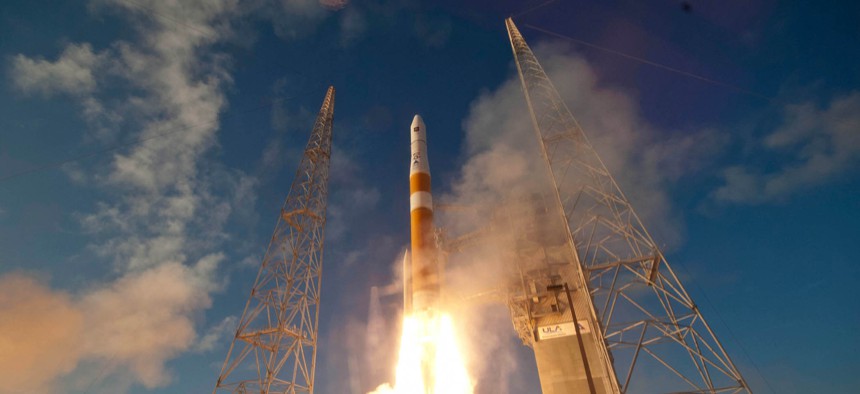
A Delta IV GPS IIF-3 is launched from Cape Canaveral Air Force Station, Fla., Oct. 4, 2012. U.S. Air Force photo courtesy of Pat Corkery
GPS Upgrades Are Late and Over Budget. Here's Why We Should Stay the Course
There's no better alternative to the GPS III and OCX programs, which thankfully appear to be on track at last.
Lawmakers and Pentagon leaders are rightly concerned about the delays and cost increases that have beset the GPS OCX and GPS III programs, the twin efforts to modernize and upgrade the Global Positioning System. But despite the problems, there remains no better, more timely way to modernize and upgrade the satellite-based navigation system that undergirds so much of our military’s ability.
It’s no secret that today’s GPS systems aren’t up to the demands of 21st-century warfare. Last month, Gen. John Hyten told lawmakers, “The capability that OCX delivers is absolutely critical to the war fighter. We’ve got to improve our resiliency in space and in ground—and that was one of the significant goals that OCX had. Whatever we do for the program specifically, we have to deliver that capability to the warfighter.”
Together, the GPS III satellites and the GPS OCX ground system are meant to offer vastly improved resistance to jamming, spoofing, and other electronic attacks while delivering better accuracy, tracking, and information sharing. It is also intended to serve as a “pathfinder program” government’s information assurance efforts. OCX also pioneers a simplified architecture that should reduce the costs of both day-to-day operations and future modifications and upgrades.
Both programs have had their troubles. Engineering challenges, cost overruns, and delayed timelines have drive the contractual costs of GPS OCX to $4.2 billion. The Pentagon’s “deep dive” into the system resulted in a decision to grant a two-year production delay. Meanwhile, the GPS III satellites, which were supposed to have begun arriving in 2014, were delayed 28 months by a navigation payload (that has since been fixed) and another three months by a component that cracked while being tested. Their cost also rose, to the tune of $4.64 billion.
But progress is being made. Last month, the Air Force successfully conducted its first formal qualification test for the OCX. And after more than seven years of development, GPS III satellites are scheduled to be in orbit and integrated by 2019.
It’s easy for policymakers to look at inefficient government programs and heed calls to terminate those contracts. But we should not always do so; especially if the program has made critical improvements that put it on a path to success and the capability is vital for our troops to complete their mission.
One can point to numerous budgetary shortfalls that have been flagged through the Nunn-McCurdy Amendment. But we still pressed forward with programs such as the F-35 Joint Strike Fighter, the Javelin Anti-Tank System, and the Apache Block III Helicopter system because they were essential to our warfighters. I believe this new GPS system will greatly improve upon outdated technology and provide the necessary improvements that will serve the warfighter and civilians for the foreseeable future.



